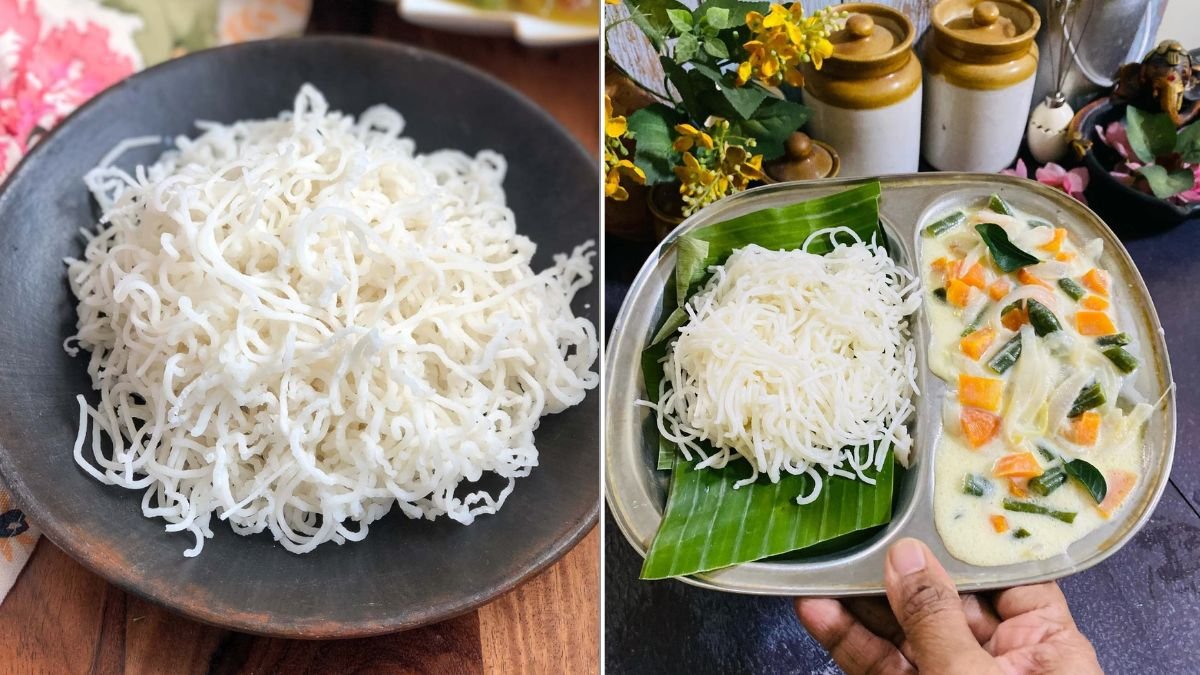Light, soft, and delicately laced with flavor, Idiyappam — also known as String Hoppers — is one of South India’s most beloved breakfast dishes. Traditionally made from rice flour, these thin noodles are steamed into soft, fluffy bundles that pair beautifully with coconut milk, vegetable stew, or spicy chutney.
But if you’re looking for a wholesome and colorful twist, Vegetable Idiyappam is the way to go. Fresh, sautéed vegetables add texture, color, and nutrients, turning the humble Idiyappam into a complete, balanced meal.
In this detailed 7-step guide, we’ll show you exactly how to make perfect Vegetable Idiyappam — from preparing the dough and pressing the noodles to steaming and mixing them with flavorful vegetables. With simple ingredients and a bit of patience, you can create a dish that’s both light and satisfying, perfect for breakfast, brunch, or dinner.
Step 1: Gather the Ingredients
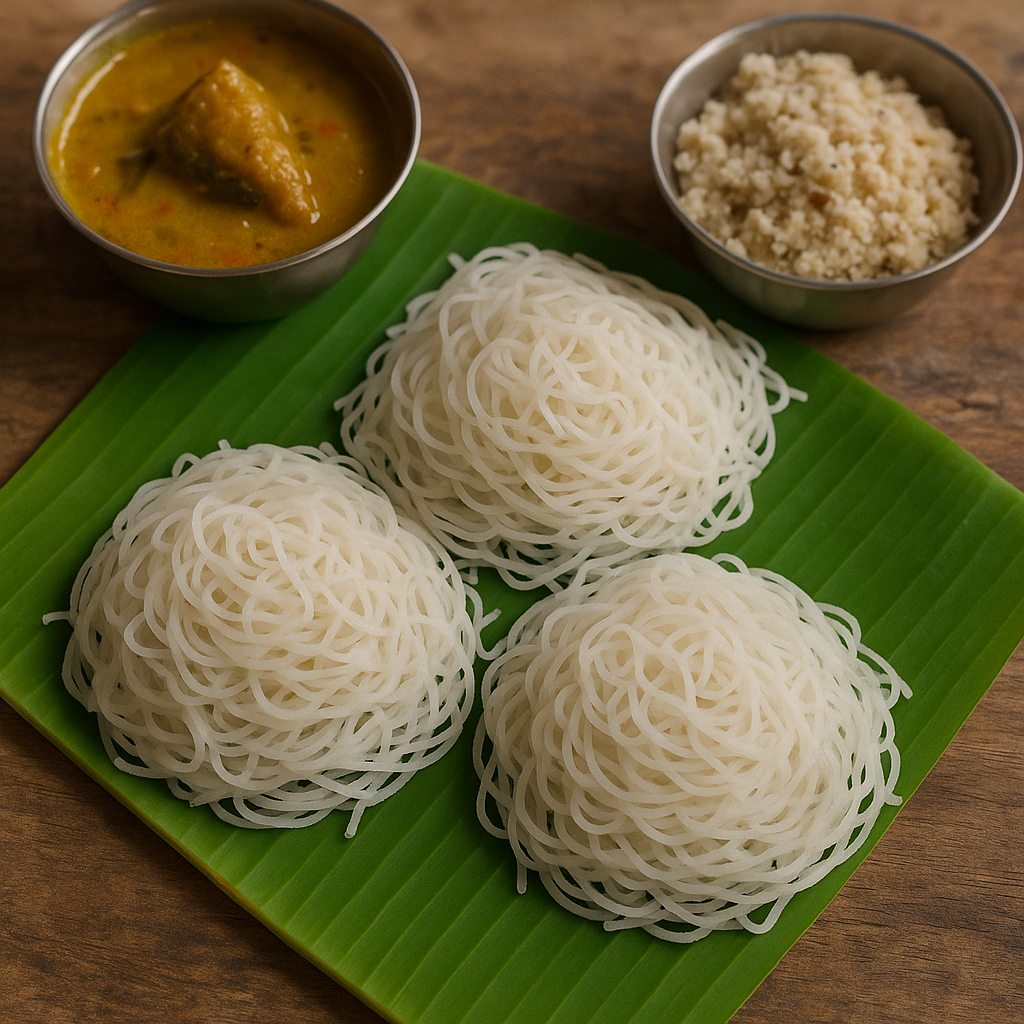
Before you start cooking, make sure you have everything ready. The process moves quickly once you start making the dough and steaming.
For the Idiyappam Dough:
- 1 cup roasted rice flour (Idiyappam or puttu rice flour works best)
- 1 ¼ cup boiling water (adjust as needed)
- ½ teaspoon salt
- 1 teaspoon coconut oil (optional, for softness)
For the Vegetable Mix:
- 1 tablespoon coconut oil or vegetable oil
- 1 teaspoon mustard seeds
- 1 teaspoon urad dal (split black gram)
- 1 teaspoon chana dal (optional)
- 1–2 green chilies, slit
- 8–10 curry leaves
- 1 small onion, finely chopped
- ½ cup grated carrot
- ½ cup finely chopped beans
- ½ cup finely chopped cabbage or capsicum
- ¼ cup green peas (fresh or frozen)
- Salt to taste
- ½ teaspoon turmeric powder
- 2 tablespoons grated fresh coconut (optional for garnish)
- Fresh coriander leaves, chopped
Equipment:
- Idiyappam maker (string hopper press)
- Idli steamer or regular steamer
- Steamer plates or banana leaves
Step 2: Prepare the Perfect Idiyappam Dough
The base of any good Idiyappam is a smooth, soft, non-sticky dough. Getting this consistency right ensures your noodles come out beautifully thin and light.
- In a large mixing bowl, add roasted rice flour and salt.
- Heat water until it just starts to boil.
- Gradually pour the hot water into the flour while stirring continuously with a spoon or spatula.
- Mix until the dough comes together and cools slightly.
- Once warm enough to handle, knead it with your hands until smooth and soft.
Pro Tips:
- The dough should be soft but not sticky. If it’s too dry, sprinkle a few drops of warm water.
- Cover it with a damp cloth while you prepare the steamer to prevent it from drying out.
Step 3: Shape the Idiyappam
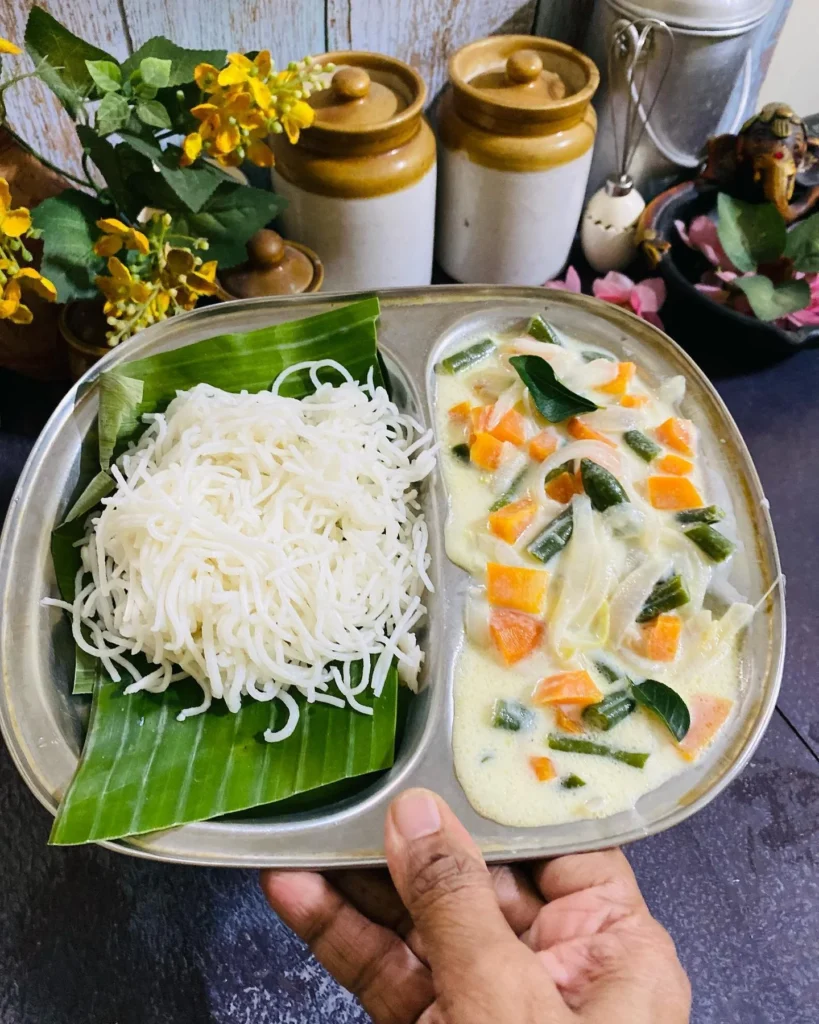
Now it’s time to turn that dough into thin, delicate noodles!
- Grease your idiyappam press lightly with oil.
- Fill it with a portion of the dough.
- Grease your steamer plate or banana leaf lightly with oil to prevent sticking.
- Gently press the dough through the mold in circular motions to form small nests or flat rounds.
You can make them small and neat or slightly bigger depending on your preference.
Pro Tip:
Avoid pressing too fast — a slow, steady motion ensures even strings without breaks.
Step 4: Steam the Idiyappam
Steaming is what gives Idiyappam its signature soft and fluffy texture.
- Bring water to a boil in your idli steamer or regular steamer.
- Place the plates or banana leaves with shaped Idiyappam inside.
- Cover and steam on medium heat for 8–10 minutes.
You’ll know it’s done when the Idiyappam turns opaque white and slightly glossy.
- Carefully remove them and let them cool slightly before handling.
Pro Tips:
- Avoid oversteaming, as it can make the noodles dry or rubbery.
- If you’re making multiple batches, cover the cooked Idiyappam with a damp cloth to keep them soft.
Step 5: Prepare the Vegetable Masala
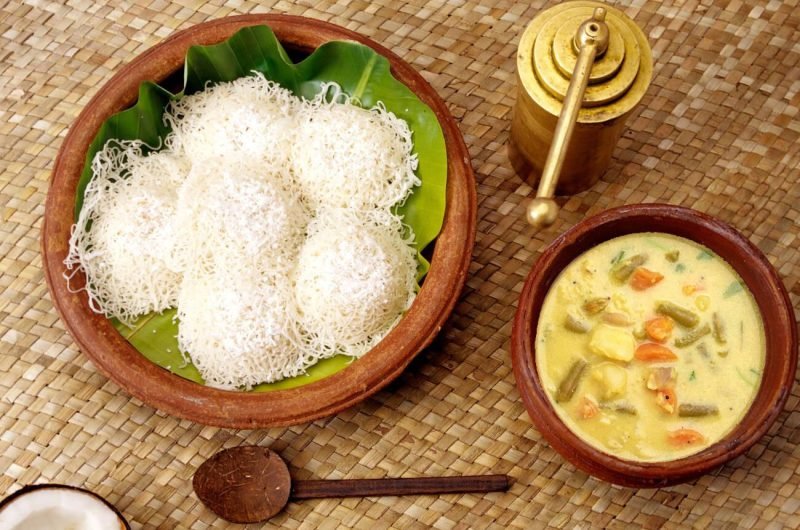
This step adds flavor, color, and a healthy twist to your Idiyappam. You can customize the vegetables based on what you have at home.
- Heat oil in a large pan or wok over medium heat.
- Add mustard seeds and let them splutter.
- Add urad dal, chana dal, curry leaves, and green chilies. Sauté until the dals turn golden brown.
- Add chopped onions and cook until they turn translucent.
- Now add carrots, beans, cabbage, and green peas. Stir well.
- Sprinkle turmeric powder and salt to taste.
- Cover and cook for 5–6 minutes until the vegetables are soft but not mushy.
Optional: Add a tablespoon of grated coconut for traditional Kerala-style flavor.
Pro Tip:
Keep the vegetables slightly crunchy — they’ll give a pleasant texture when mixed with the soft Idiyappam.
Step 6: Mix the Idiyappam with Vegetables
Now comes the final step — combining your perfectly steamed Idiyappam with the flavorful vegetable mixture.
- Gently break the steamed Idiyappam nests into thin strands using your fingers or a fork.
- Add the Idiyappam strands to the vegetable mixture.
- Toss lightly with a spatula to combine everything evenly.
Be gentle while mixing to avoid breaking the delicate noodles.
- Taste and adjust seasoning — add a pinch of salt or squeeze of lemon juice if needed.
- Garnish with chopped coriander leaves and grated coconut.
Your beautiful, fragrant Vegetable Idiyappam is now ready to serve!
Pro Tip:
If the Idiyappam feels too dry, drizzle a few drops of coconut oil or a splash of warm water before mixing.
Step 7: Serve and Enjoy
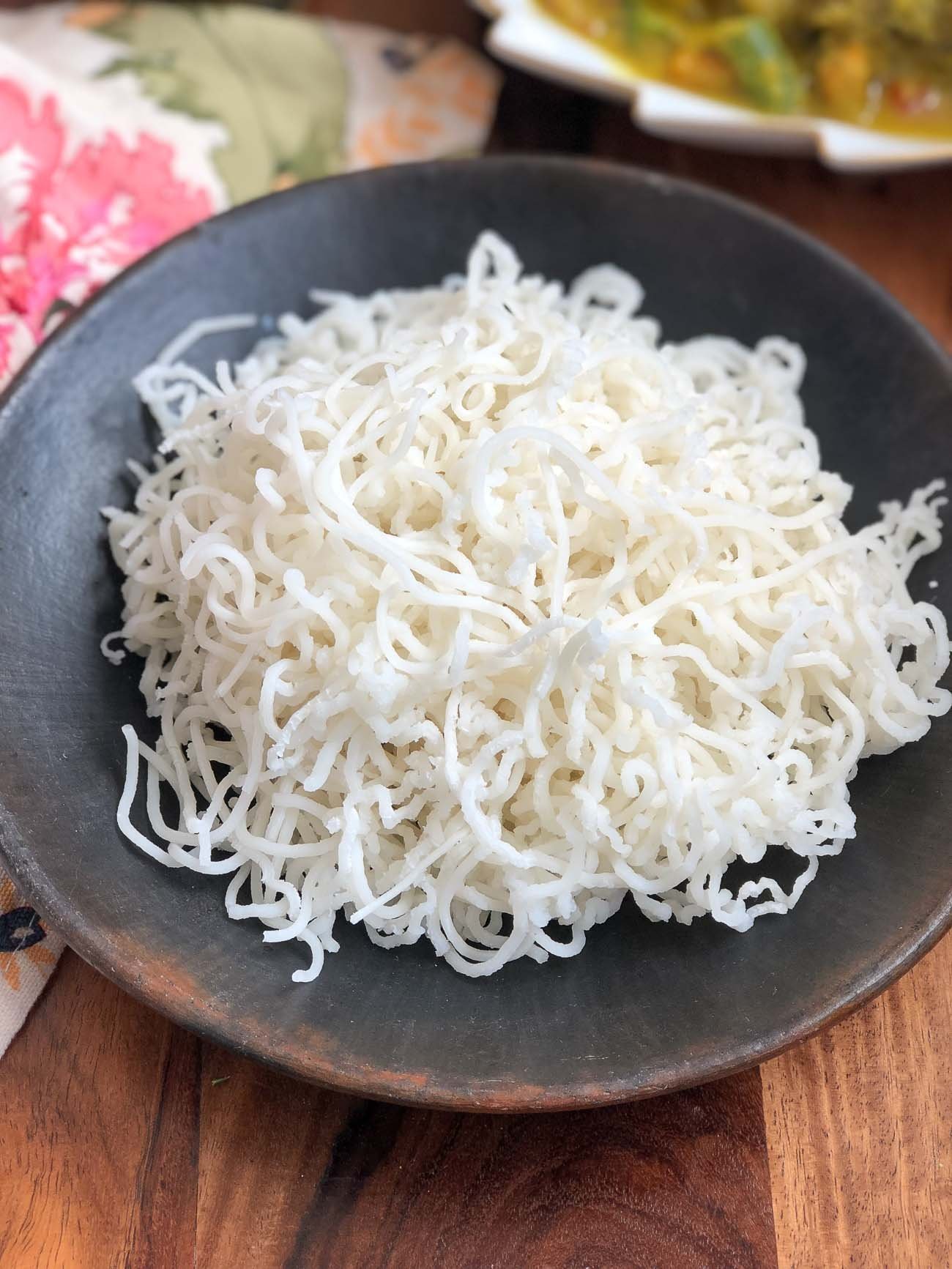
Vegetable Idiyappam can be enjoyed as a light breakfast, healthy lunch, or wholesome dinner.
Serving Ideas:
- Traditional Style: Serve with coconut chutney or vegetable stew on the side.
- Simple Style: Drizzle with coconut milk and a pinch of jaggery for a sweet-savory balance.
- Hearty Meal: Pair it with sambar or kurma for a South Indian feast.
For a special touch, sprinkle toasted sesame seeds or fried cashews on top before serving.
Pro Tip:
Vegetable Idiyappam tastes best when served warm — if it cools down, steam it for 1–2 minutes to refresh the texture.
Bonus Tips for Perfect Vegetable Idiyappam
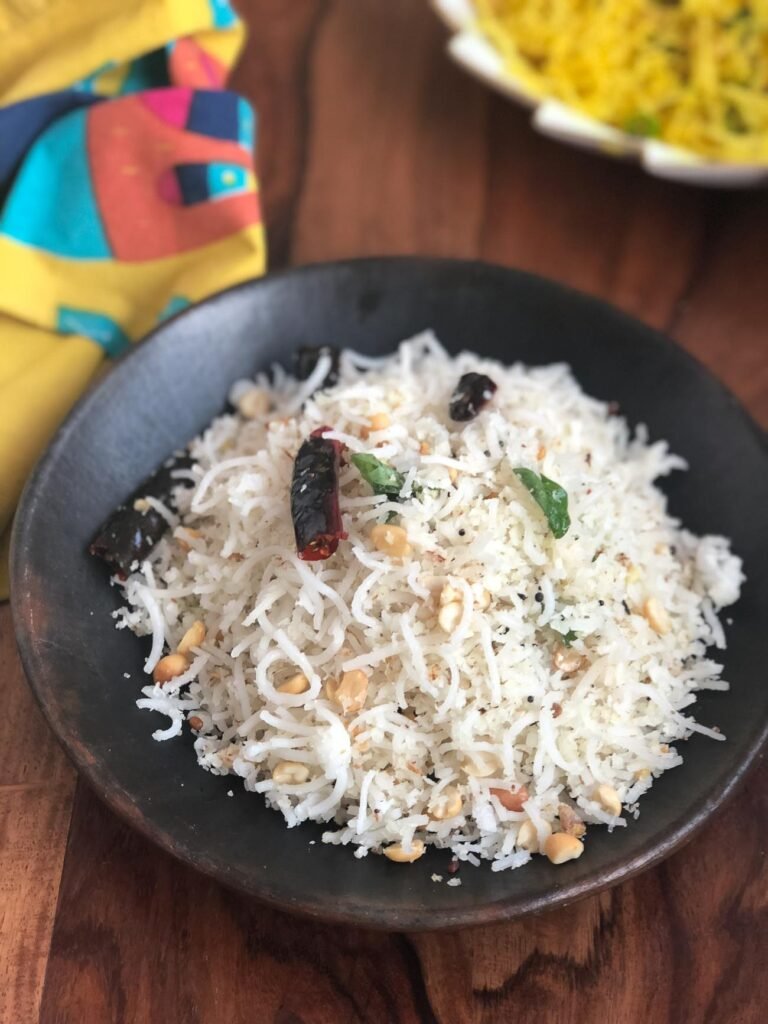
- Use the Right Flour:
Always use fine, roasted rice flour made specifically for Idiyappam or puttu. It makes a big difference in texture. - Hot Water Matters:
Use boiling water for the dough — it helps the flour cook slightly and results in soft, pliable dough. - Keep Dough Moist:
Dry dough will lead to crumbly strings. If the dough hardens while pressing, sprinkle warm water and knead again. - Don’t Skip Steaming:
Raw or under-steamed Idiyappam can taste gritty. Ensure they turn fully opaque before removing. - Oil Helps:
Lightly oiling the press, steamer, and your hands prevents sticking. - Customize the Veggies:
Add mushrooms, bell peppers, or even spinach for extra flavor and nutrition. - Make Ahead:
You can steam the Idiyappam ahead of time and reheat them before mixing with vegetables — perfect for busy mornings.
Variations to Try
Once you’ve mastered the basic Vegetable Idiyappam, experiment with these flavorful variations:
- Lemon Idiyappam: Toss steamed Idiyappam with lemon juice, turmeric, and mustard tempering for a zesty twist.
- Coconut Idiyappam: Mix with sweetened coconut and jaggery for a traditional dessert-style version.
- Spicy Schezwan Idiyappam: Stir-fry with Schezwan sauce and vegetables for an Indo-Chinese fusion.
- Paneer Idiyappam: Add crumbled paneer or tofu for a protein-rich meal.
- Mint-Coriander Idiyappam: Mix with a green chutney paste for a fresh, aromatic variation.
Final Thoughts
Soft, fragrant, and bursting with flavor, Vegetable Idiyappam is the perfect combination of traditional simplicity and modern nutrition. With just a few ingredients and seven easy steps, you can create a dish that’s wholesome, vibrant, and deeply satisfying.
This recipe celebrates everything beautiful about South Indian cooking — light, healthy, and filled with natural flavors. Whether you serve it with chutney for breakfast or stew for dinner, Vegetable Idiyappam brings warmth and comfort to every meal.
So the next time you crave something soothing yet special, skip the usual rice or noodles — make Vegetable Idiyappam instead. It’s proof that even the simplest dishes can be transformed into a feast with a little care and creativity.
